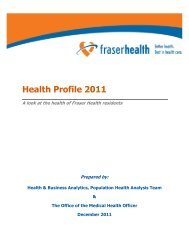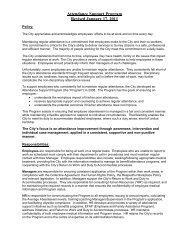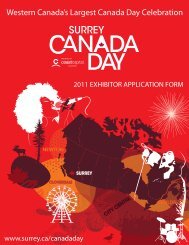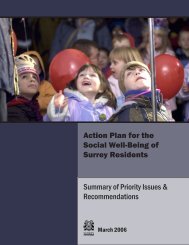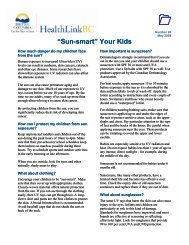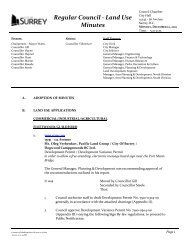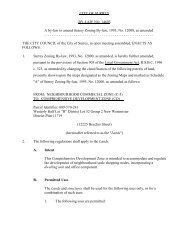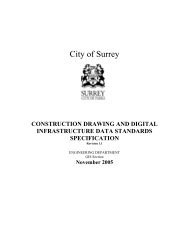Blackie Spit Park: Wildlife Habitat Enhancement Plan - City of Surrey
Blackie Spit Park: Wildlife Habitat Enhancement Plan - City of Surrey
Blackie Spit Park: Wildlife Habitat Enhancement Plan - City of Surrey
Create successful ePaper yourself
Turn your PDF publications into a flip-book with our unique Google optimized e-Paper software.
I suggest using small-diameter circular plots (about 25 m radius), located, where<br />
possible, so that the entire plot encompasses the same habitat type or habitat complex.<br />
When sampling hedgerows, or where more than one distinct habitat patch occurs in<br />
a plot (count circle), map and measure the habitat types within each count circle;<br />
during surveys indicate the habitat occupied for each animal recorded.<br />
Record the number <strong>of</strong> individuals <strong>of</strong> each species detected and indicate whether the<br />
detection was audible only or whether the animal was sighted. During the breeding<br />
season, indicate whether a bird was singing. Record habitat if applicable (see previous<br />
point).<br />
Marine Birds<br />
Determine which shorelines are to be surveyed and set survey boundaries.<br />
Within each shoreline segment surveyed, record bird use <strong>of</strong> the estuary within zones<br />
<strong>of</strong> different distances from shore (e.g. closer or farther than 50 m from the shoreline<br />
being surveyed). Record the following information:<br />
• Total count <strong>of</strong> each species in each zone at the time <strong>of</strong> the survey<br />
• Tidal tendency (rising or falling).<br />
• The percentage <strong>of</strong> the zone that is flooded by the tide (95%).<br />
Vole Surveys<br />
Methods <strong>of</strong> determining vole abundance <strong>of</strong>ten require intensive survey effort involving trapping and<br />
marking animals. An easier method is to measure vole activity as indicated by the abundance <strong>of</strong><br />
runways and burrows. Both methods have their assumptions and limitations. The runway count<br />
method is recommended here.<br />
In the area to be surveyed, conduct a minimum <strong>of</strong> 5, 5-metre transects or more if the results are highly<br />
variable. Ensure that the locations chosen for the transects are all similar and representative <strong>of</strong> some<br />
aspect <strong>of</strong> the area being surveyed (e.g., same habitat type; all away from the field edge or all near it,<br />
etc.). If necessary, create a set <strong>of</strong> samples for each identifiable field variable.<br />
The survey method entails marking a 5-m length on the ground, then, starting at one end, part the<br />
grass down to the ground for the length <strong>of</strong> the transect and count each runway or burrow crossed.<br />
Amphibian Surveys<br />
Several amphibian survey methods exist, depending on the species being surveyed and the time <strong>of</strong><br />
year. Encounter surveys are the simplest method that can be used for frogs and for both terrestrial<br />
and aquatic salamanders. Encounter surveys are, therefore, recommended. This method is used in<br />
the early spring (mid February through April) when animals are most active.<br />
<strong>Blackie</strong> <strong>Spit</strong> <strong>Park</strong>: <strong>Wildlife</strong> <strong>Habitat</strong> <strong>Enhancement</strong> <strong>Plan</strong> – PART 1: Background and Summary 19



